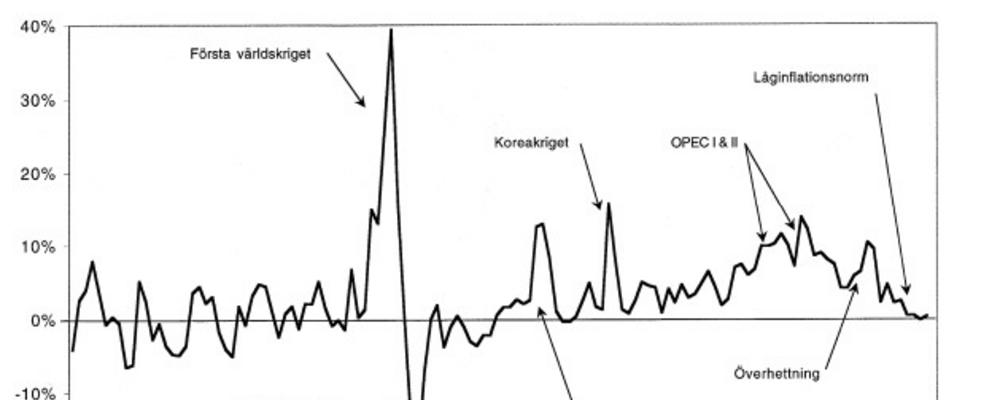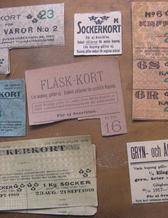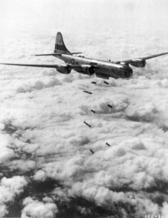
- Home
- News and events
- Find news
- War and conflict often lead to high inflation
War and conflict often lead to high inflation
Increased inflation figures and rising prices. But not for the first time. In modern history, there are plenty of examples of high inflation and often the common denominator is war or conflict.
”War has often played a role in inflation. There’s a boom in certain types of production, demand increases and prices are driven up”, says Staffan Granér, Senior Lecturer in Economic History.
Until the 1660s, virtually all money in Sweden consisted of metals such as silver, gold, and copper. There was a market for the metals that determined the value of money and supply could vary.
”When Europe was flooded with silver from America in the 1500s and 1600s, prices rose as the purchasing power of silver declined in value. And although the consequences were not so serious, it’s an early example of inflation that also affected Sweden”, says Staffan Granér.
Another historical example can be found during the Swedish Age of Liberty in the 1700s. Sweden’s first two political parties, known as the Hats and Caps, competed for power.
Too many banknotes to finance war

When the Hats were voted into power in 1738, money was needed to realise an expansive policy that included war against Russia and Prussia. Riksens Ständers Bank, which eventually became Sweden’s Riksbank (central bank), began printing banknotes in far too large quantities and inflation was a fact.
”The inflation rate during the Hats’ years in power reached as high as just over 30 percent. Many speculated, there was plenty of money to borrow, and new businesses such as ironworks started. When the money declined in value, they could then repay their hollowed-out loans. Something that further drove inflation”, says Staffan Granér.
In 1766, the Caps took power and introduced a tight monetary policy that led to a sharp deflation. After about 100 years with some minor inflation peaks, Sweden joined the internationally controlled gold standard in 1873, which meant that a certain amount of gold had a fixed price in its own currency, the krona. The purpose of the arrangement was mainly to stabilise exchange rate fluctuations between different currencies, but it also forced a tight monetary policy that kept inflation low.
High inflation during the World Wars
In 1914, World War I broke out and soon Sweden found itself in the highest inflation it had ever experienced. We left the gold standard along with most other countries, as it was not possible to maintain the fixed price for gold with increased defense spending.

Suddenly, there was more money in relation to production and costs skyrocketed. The price of imported food rose sharply along with other imported goods, while production in the country was limited.
”In periods, inflation could be over 30 percent with very high peaks. Attempts were made with price controls and rationing of food and other necessities, but the result was often still empty shelves in stores. Those who had contacts and money acquired goods on the black market”, says Staffan Granér.
World War II presented a similar situation, but inflation was not nearly as high. Sweden had become more self-sufficient during the 1930s and managed to maintain production fairly well. Which did not prevent inflation from sometimes rising to between 10 and 15 percent.
”The government tried to manage this through an extensive system of rationing where they distributed the little production that existed. The black market trade was not as extensive as during World War I and they managed to keep prices down.”
Record years and oil crisis

Prices stabilised after the 1945 peace, but when the Korean War broke out in 1950, it was time again.
When the prices of Sweden’s imports increased, the cost level in the economy generally increased. This created a spiral of expectations that drove up wages and labour costs. Inflation became a fact. The effect was further strengthened when war rationing was abolished in 1951.
After the Korean War, what would turn out to be the record years in Western economic development began. The growth rate was high, and a puritanical economic policy was pursued where the government prioritised combating unemployment before inflation. People got used to living with some, slowly increasing inflation.
In 1973, it came to a halt. The oil-exporting countries’ organisation OPEC introduced an oil embargo and oil prices skyrocketed. Swedish industry was hit and production declined in shipyards, steel mills, and paper mills, among others.
”The government took over the steel industry and shipyards, ran them under its own direction and produced at a loss. It kept unemployment down, but production declined faster than consumption and inflation increased.”
The shipyards never recovered. But the electronics industry made its entrance, and with a growing IT market, along with a growing car industry, inflation declined.
Overarching inflation target
In the early 1990s, the next crisis came. An expansive domestic policy to raise Sweden’s competitiveness resulted in free-for-all borrowing and money flowing freely across Sweden’s borders. Prices rose quickly and the government devalued the krona several times. The Swedish economy once again found itself in a situation of high inflation.

”The crisis led to a policy where we, like almost all other industrialised market economies, got an independent central bank with an explicit goal of pursuing a monetary policy that will keep inflation around two percent. In other words, the inflation target must be superior to all other goals, such as fighting unemployment.”
With a few exceptions—the terrorist attack on 11 September 2001 and the so-called Lehman crash in 2008—the inflation target was reached during the 2000s. Until this year.
”It’s not surprising that the triggering factor for high inflation this time can be linked to the ongoing war in Ukraine, the gas being shut off, and energy prices rising. What is happening now is recognisable. Really high inflation has often interacted with wars and conflicts. But that doesn’t mean that economic policy doesn’t matter”, says Staffan Granér, Senior Lecturer in Economic History.
By: Thomas Melin